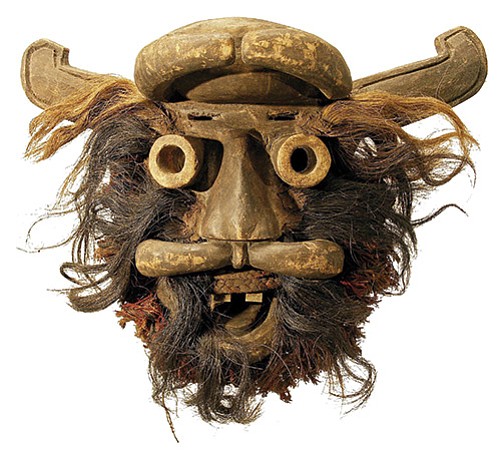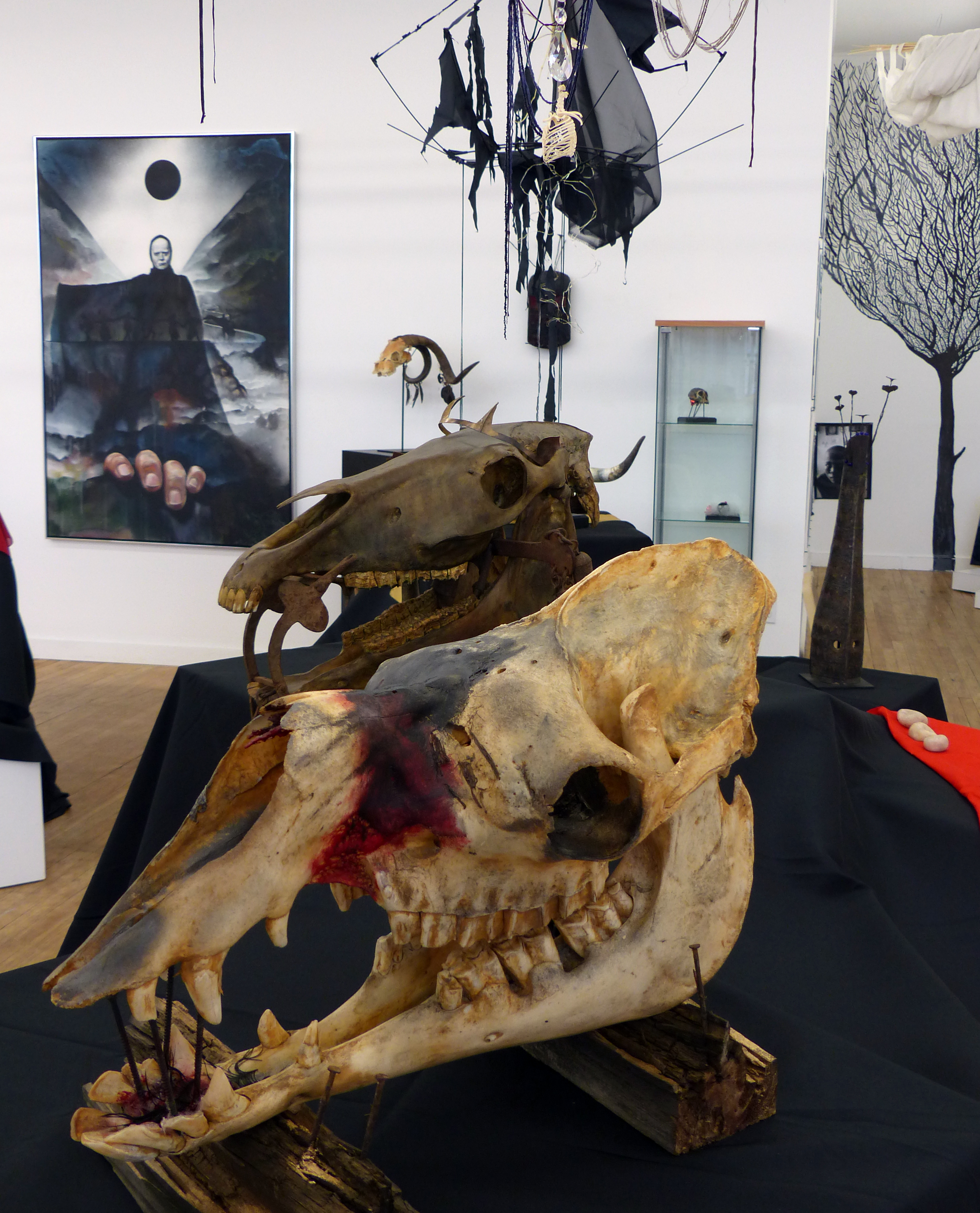
Through February 11, the Hamill Gallery of Tribal Art in Roxbury is exhibiting “Grotesques,” an installation of masks and figural representations. Used in the ceremonies of African tribes over centuries, each piece has a specific story. The figures are exhibited on white, block pedestals against the walls and scattered through the central gallery space. This forces visitors to walk among them, examining each piece in the round and interacting with it in a space as they might have at the time of its creation. These works weren’t just decorative pieces in their heyday, but integral, active components of daily life.
“Fetish Panel 1,” native to the Ijo people, depicts three figures seated on a carved throne. The central figure is the leader, in an elaborate headdress with his hands reaching out in two fists, a power pose. His companions flank him with slightly less aggressive posture and facial expressions. A “fetish” statute was the equivalent of a Christian icon, a spiritual talisman. Many of the Ijo tribes believed that these objects acquired their power during creation, through ritualistic carving and consecration materials like horns, shells, feathers, cloth, and metal.
You can see a piece of cloth still tied around the central figure’s head, and another draped over the laps of all three. The leader’s headdress features carved feathers that were perhaps once embellished with the real thing. This idea of infusing a physical object with spiritual meaning with artistry is an interesting reflection on art making as a whole. The creation of the work is equally as important, to its maker and its viewers, as they end result.
 The “Barong Mask” from Bali, Indonesia aptly lives up to the exhibition name. It features a bright red face with horns, red eyes, a flared nose, and giant bucked teeth flanked by tusks. This particular version has black feathers and hair tumbling down from the mask. Many pieces in the exhibition have this kind of hair or beard. Interestingly, this demon-like creature is a good guy. In Indonesian lore, he’s the king of the spirits, and the enemy of the demon queen Rangda. The battle between Barong and Rangda, often depicted in dance, represents the eternal struggle between good and evil.
The “Barong Mask” from Bali, Indonesia aptly lives up to the exhibition name. It features a bright red face with horns, red eyes, a flared nose, and giant bucked teeth flanked by tusks. This particular version has black feathers and hair tumbling down from the mask. Many pieces in the exhibition have this kind of hair or beard. Interestingly, this demon-like creature is a good guy. In Indonesian lore, he’s the king of the spirits, and the enemy of the demon queen Rangda. The battle between Barong and Rangda, often depicted in dance, represents the eternal struggle between good and evil.
This impulse to reenact good conquering evil speaks to a human need for comfort and control. Another, slightly less grotesque, Barong mask is displayed for comparison. Though this one maintains the same physical attributes, he appears to be wearing a kind of crown painted with rich gold, red, and blue hues. The painting utilizes different patterns and textures as well.
“Grotesques” is a fascinating dive into the stories of ancient African cultures. Both the symbolism behind each piece, and the delicate craftsmanship of it, reveal a human need to confront our fears, and champion our heroes, however many horns either of them have.
This review was written for and published in The Bay State Banner.
Images courtesy of Hamill Gallery.
